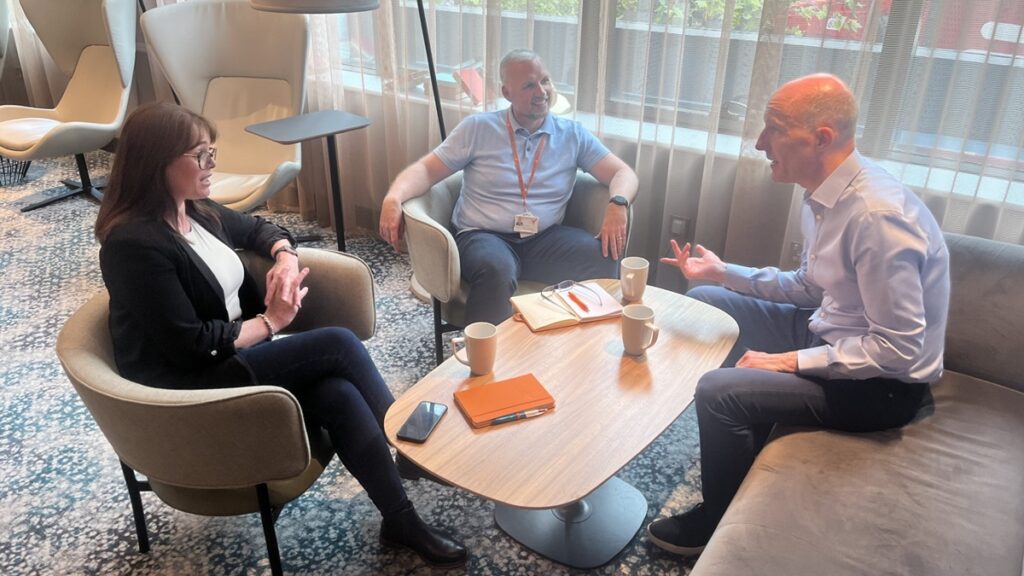Growth Engines: Lead using a simple, big, bold number
Damar Training has one key target: to double the number of apprenticeships it offers in the next 20 months.

Jonathan Bourne, joined by his former boss, Phillip Bennett, exited corporate life and bought Damar Training, a small apprenticeship training provider, to turn their talk into a walk.
Today, with 65 people and nearly 1,200 apprentices across various disciplines, many organisations depend on Damar to equip new and existing staff members with the skills needed to drive business performance. Motivated by their accomplishments, Bourne and his team have set an audacious 20-month goal to double the number of apprentices on Damar’s books.
The back story
The Apprenticeship Levy is charged to all employers with annual UK salary bills exceeding £3m. It will raise about £4bn in the next academic year. Employers of all sizes in England can use it to enhance the capabilities, skills and capacity of their most valuable asset: their people.
Most sectors are heavily contested. Competition is fierce and more challenging in a sluggish economy where cost management, once exhausted, has business leaders turning to productivity enhancements. But productivity is hard to get right and depends on measuring and improving performance across all resources. People are a significant component, so increasing skills and competencies for new and existing team members makes for an easy win.

Measuring a machine is easy. How many hours does it operate over a 160-hour working month if it’s a printer or stone crusher? To increase its productivity, feed it more work to hit a 90 per cent run rate, leaving 10 per cent for maintenance, love and care.
Measuring people performance is harder. It is an exercise of empathy and business process improvement. Understanding what your employees do and how they do it, and reminding yourself why they do it, opens the door to understanding how and where you can help your team improve. Empowered teams deliver high performance and contribute social-emotional benefits across any company.
This approach opens Damar’s potential to a company’s top and bottom line in practical terms. Apprenticeships close skills gaps, contributing to productivity gains, compounded by the energy, increased motivation, and new skills and ideas that apprentices bring.
Where we are today
The Covid crisis brought unprecedented change to our lives. The word crisis derives from a Latinised Greek meaning “a change in a state requiring a decision or change in response”. Driven by necessity, Damar dematerialised its service.
“Before Covid, our coaches visited apprentices nationwide and apprentices travelled to in-person workshops. The cost of time, stress and mileage was huge. Today, we mostly deliver online, supported by high-quality learning resources and well-structured programmes,” says Bourne. Damar’s average rating across all its apprentices was 94 per cent in 2023.
The outcome is a scalable chassis that can now be used nationwide across England. Damar can ramp up the number of apprentices it can upskill and accelerate growth and impact.
The near future
It is estimated that just over 95 per cent of employees working in companies have no idea what the company’s growth plan is nor how what they do helps or hinders the attainment of that plan. It’s a missed opportunity and failure in leadership. Employees want to understand the purpose before a salary package. Most also want to share insights gained from the coal face of delivering their work and how these insights could help the company thrive.
Bourne is a natural leader. “My team understands the impact of what we do across the economy, both for our client companies and our customer apprentices. It drives our purpose and doing more of it benefits everyone. I work hard to show that growth in the company also means growth for all,” he says. “We are one team of 65 and growing, with a clear business purpose. It makes us many times more powerful than a single leader or a small senior management team that tries to manage every detail.”
The company aims to serve 2,300 apprenticeships within 20 months. That is a simple, big, bold number to navigate toward in our noisy business environment.
Growth and value perspectives
To amplify, simplify and lead impactfully, set a single, big, bold future number to guide all decisions, actions and messaging across your company, suppliers and customers. Let’s use the analogy of a maritime journey by ship to illustrate this idea.
Destination: Any successful seafaring journey begins with clarity on your destination. It allows you to resource your journey, lead effectively and ensure progress. For example, a cargo ship sailing from Portsmouth to New York takes seven days. A smart captain resources 10 days of food, fuel and water in case of foul weather or other unforeseen factors in the journey. Clarity of destination also allows the captain to lead with one single purpose and direction, which creates consistency of decision-making, builds understanding and creates alignment on behaviours across the entire crew.
It’s no different for a managing director or CEO and Bourne’s near-term destination of 2,300 apprentices is a simple measure. Add to that by setting a 10-year destination, say 20,000 apprenticeships. This will deepen purpose and drive even more deliberate intent and investment behind Damar. Annual waypoints help measure and achieve progress towards this audacious goal.
The message to all stakeholders is clear. We are here to stay, grow and serve in delivering a material impact on our economic and societal performance. For a purpose-driven business, it is this that creates a purpose-driven team.
Crew and Systems: Ensuring you have the right crew doing the right things at the right time and aligning them to the greater purpose of their functional roles creates meaning and builds culture. When setting an audacious goal, include your team. Undertake the patient process of asking for your team’s voice, insights and ideas to reach the destination. Co-created and bought-in targets create accountability.
Lead from the bridge or work in the engine room: The most valuable commodities we own as leaders are our time and attention. Where you invest them today determines what you will have tomorrow. A ship’s engine room drives the propellors akin to driving your business through the daily, weekly and monthly operational engagements with your team, suppliers and customers. The bridge of a ship is where leading the business takes place.
Using instrumentation generated by the working systems in the ship, you manage the productivity and efficiency of your journey while navigating using waypoints to reach your destination. As a leader in your business, you ideally want a 70:30 split of your time and attention between bridge and engine room work.
Growth Engines showcases remarkable yet frequently under-recognised business owners who collectively form the basis of our economic engine and whose entrepreneurial fortitude creates a more inclusive and prosperous Britain. It shares their journey, highlighting hard-earned insights and lessons on overcoming challenges and driving business growth.
Its creator, Pavlo Phitidis, is a founder of Aurik, a business scale and growth execution platform for established business owners. He also speaks internationally and authored two books: Sweat, Scale Sell: Build Your Business into an Asset of Value and Reset, Rebuild, Reignite: Turning Crisis into Opportunity



